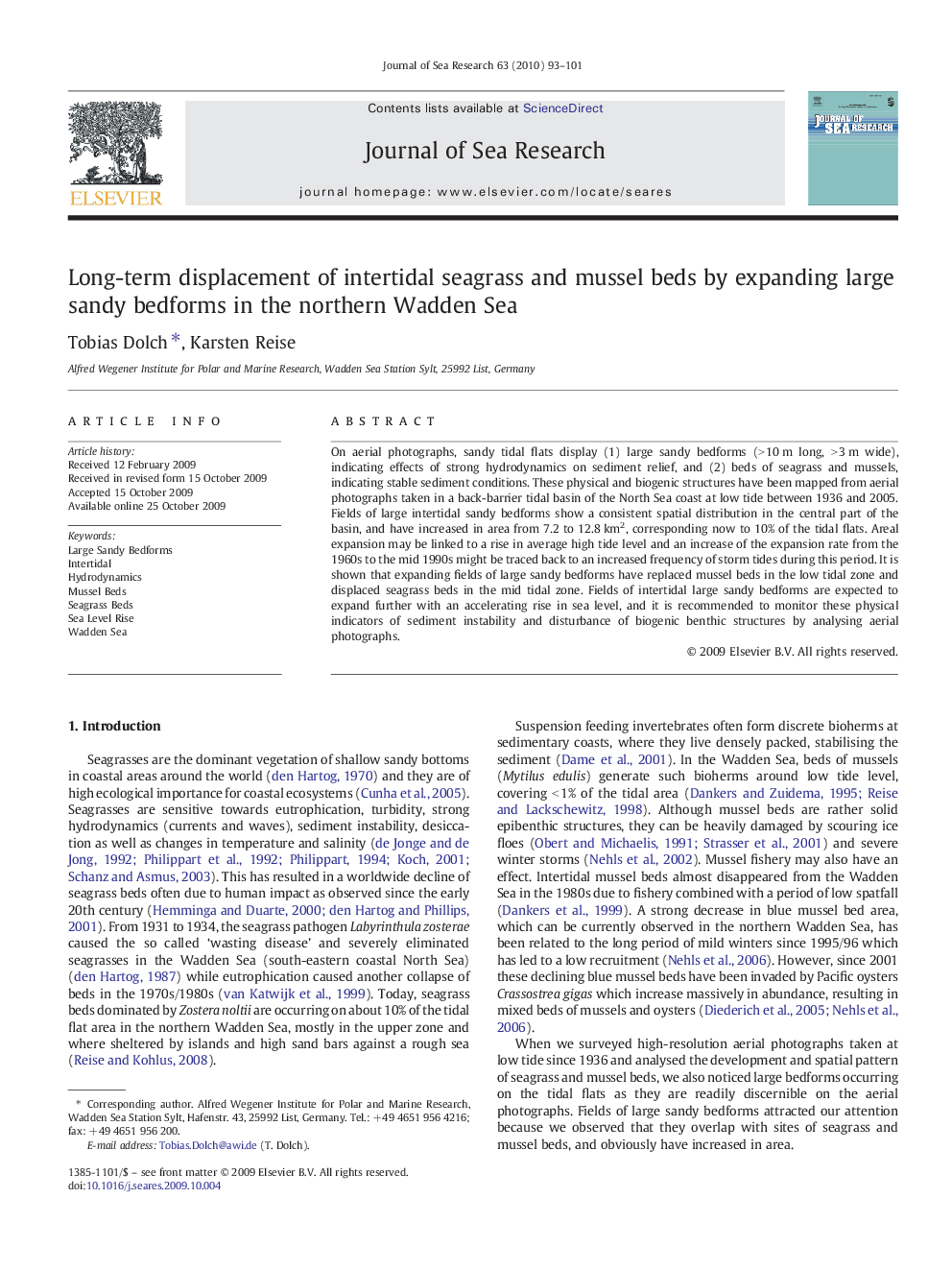| Article ID | Journal | Published Year | Pages | File Type |
|---|---|---|---|---|
| 4550250 | Journal of Sea Research | 2010 | 9 Pages |
On aerial photographs, sandy tidal flats display (1) large sandy bedforms (> 10 m long, > 3 m wide), indicating effects of strong hydrodynamics on sediment relief, and (2) beds of seagrass and mussels, indicating stable sediment conditions. These physical and biogenic structures have been mapped from aerial photographs taken in a back-barrier tidal basin of the North Sea coast at low tide between 1936 and 2005. Fields of large intertidal sandy bedforms show a consistent spatial distribution in the central part of the basin, and have increased in area from 7.2 to 12.8 km2, corresponding now to 10% of the tidal flats. Areal expansion may be linked to a rise in average high tide level and an increase of the expansion rate from the 1960s to the mid 1990s might be traced back to an increased frequency of storm tides during this period. It is shown that expanding fields of large sandy bedforms have replaced mussel beds in the low tidal zone and displaced seagrass beds in the mid tidal zone. Fields of intertidal large sandy bedforms are expected to expand further with an accelerating rise in sea level, and it is recommended to monitor these physical indicators of sediment instability and disturbance of biogenic benthic structures by analysing aerial photographs.
